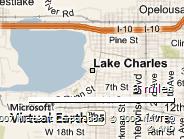The economic ripples of the nuclear renaissance become a bit more tidal today as Louisiana governor Bobby Jindal announced a joint venture between Westinghouse and the Shaw Group to build the first module fabrication and assembly facility in the U.S.focused on constructing components for new and modified nuclear reactors.
Here's some more:
In addition to constructing components for new and modified nuclear reactors, the new Lake Charles facility [Lake Charles is about 60 miles west of Baton Rouge] will have the capability to manufacture modules for chemical sites and petrochemical plants around the world. It will create at least 1,400 jobs in Lake Charles over the next five years at an average salary of $50,000 plus benefits.
We suspect the part of the business devoted to chemical plant elements might decrease as nuclear plant mod building increases, but Shaw could add employees as necessary, too. And the real money quotes:
According to an economic impact analysis performed by Louisiana State University, the Shaw/Westinghouse agreement will result in $17.8 billion in new sales, $4.5 billion in new earnings and 9,205 total new Louisiana jobs, including indirect jobs, over 15 years.
And:
These benefits do not include the value of retaining the majority of Shaw’s existing jobs or the potential for Louisiana to become the national leader in nuclear component manufacturing at a time when the nuclear energy industry is expected to experience rapid growth for decades to come.
We've downplayed Louisiana's package of goodies that has helped to make this happen. You can read about this at the link, but it's not an atypical government/business interaction. The state has three goals at least: to keep The Shaw Group in Louisiana for a guaranteed length of time - 15 years, at least - to further develop professional-level jobs in the state and to grow that corner of the state into a Silicon Valley-like center for nuclear parts fabrication (thus drawing in more businesses). The state has some control over the first two through tax breaks and largesse; the third is a hope that may not come to pass. But if it does, bingo.
Very good news, however you slice it, and a sign of the economic benefits of nuclear energy beyond the actual location and operation of a plant.
Map of Lake Charles, Louisiana. Note the lake - truth in advertising.

Comments